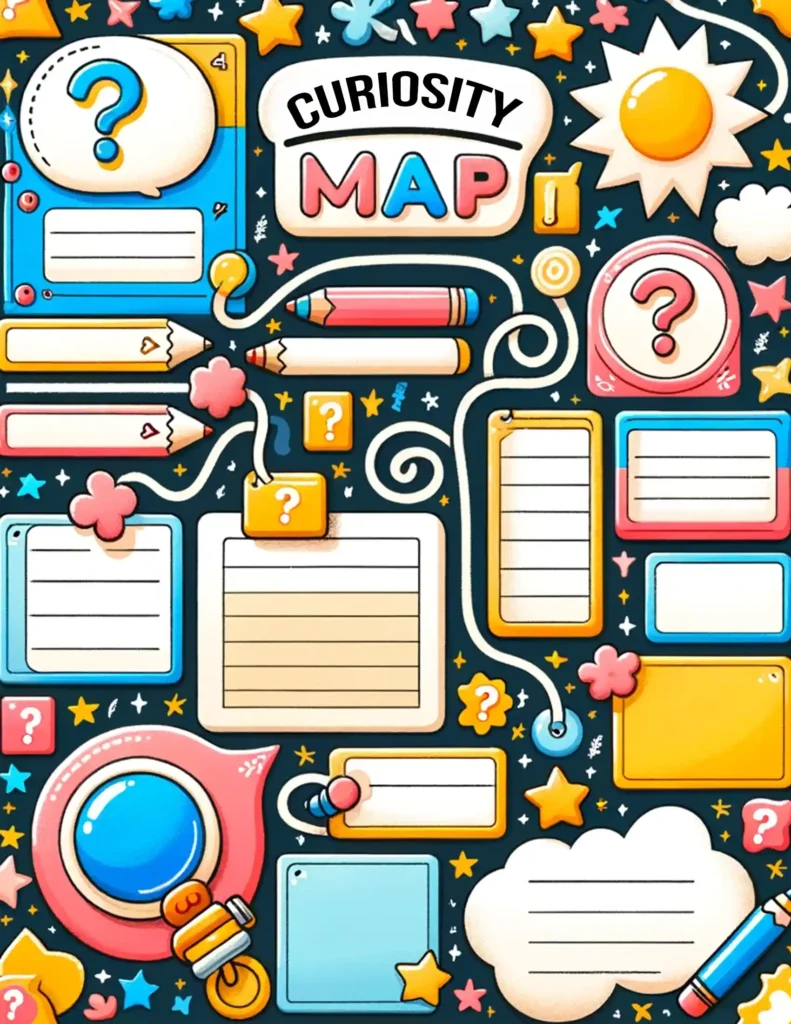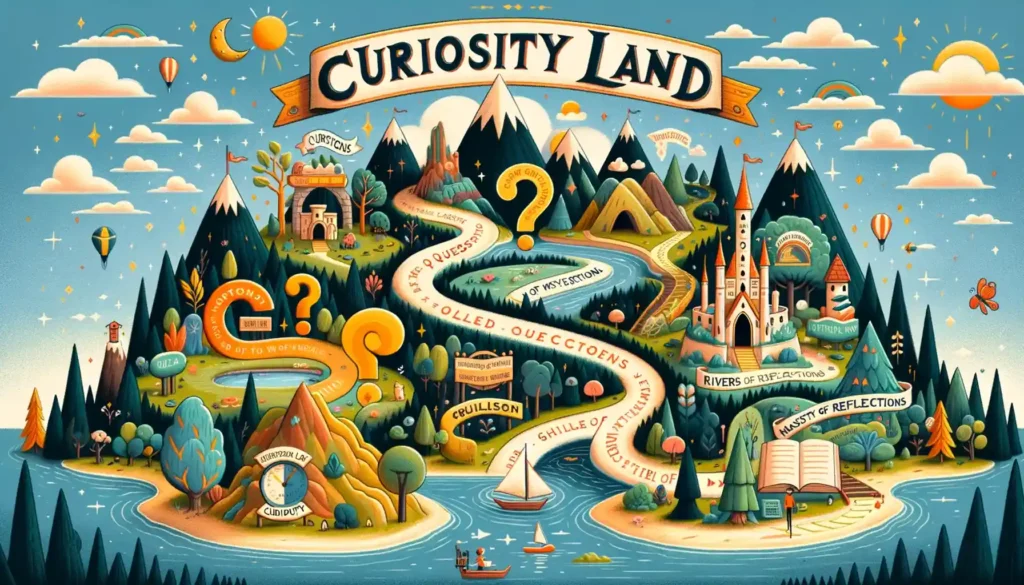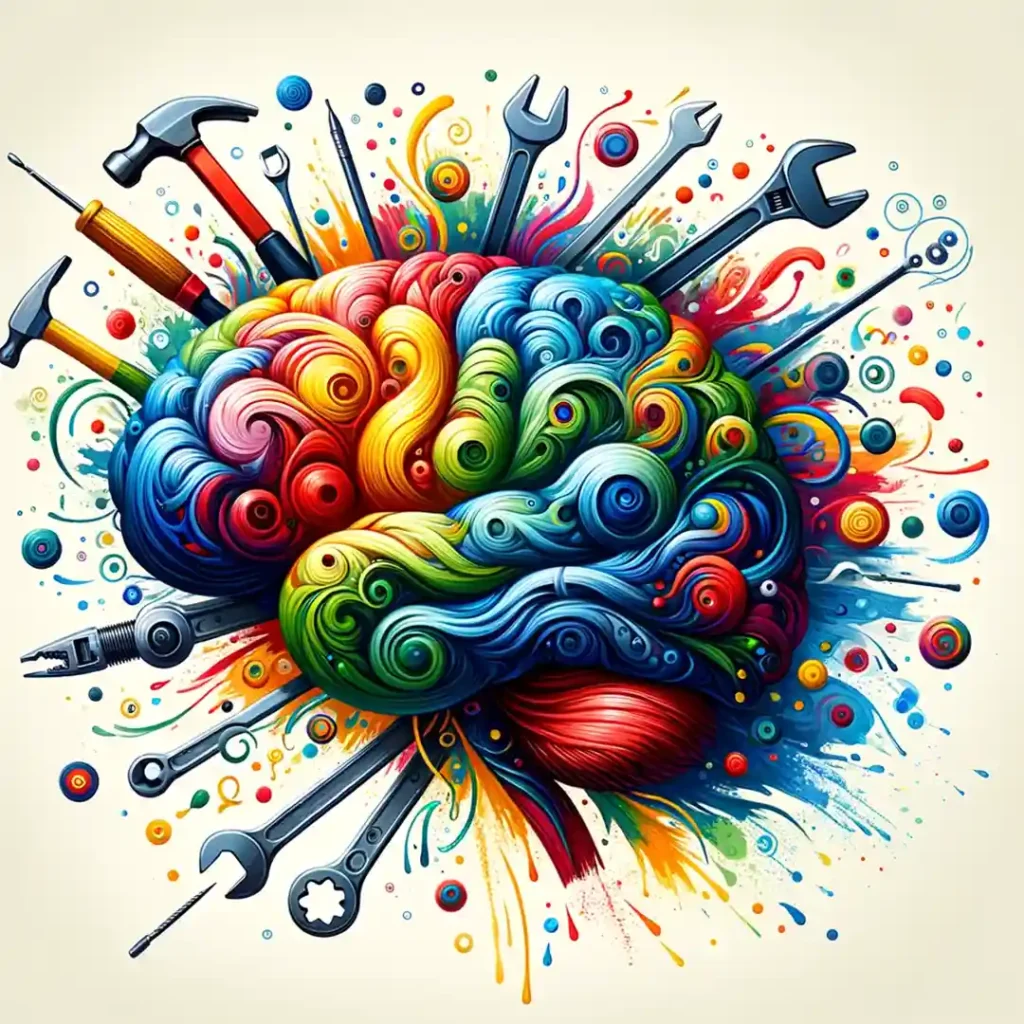In today’s lesson, we will embark on a journey fueled by our natural curiosity about the world around us. Curiosity drives us to explore, ask questions, and seek answers, leading to profound learning experiences. By harnessing our inquisitive nature, we can uncover mysteries, understand diverse perspectives, and connect meaningfully with the world. This lesson will guide students through the process of identifying what intrigues them, collaborating with peers to discover answers, and mapping out their areas of interest and inquiry. Let’s ignite their curiosity and see where it leads us!
Learning Goals
- I will be able to articulate and document questions I have about the world.
- I will be able to collaborate effectively in a group to research answers to shared questions.
- I will be able to create a personal “Curiosity Map” that outlines my areas of interest and the unknowns I wish to explore.
Materials
- Sticky Notes
- Large sheets of paper, coloring pencils and/or digital devices with drawing software
Process
Complete any number of the following activities:
#1: Brainstorming Our Questions
Objective: Students will brainstorm questions they have about the world, ranging from natural phenomena to cultural mysteries.
- Warm-Up: Begin with a brief discussion on the value of curiosity and how it leads to learning. Share an example of a time a question led you to a fascinating discovery.
- Individual Brainstorming: Each student writes down as many questions as they can think of that they have about the world on sticky notes. Encourage them to think broadly and creatively.
- Group Sharing: Students form small groups and share their questions, sticking them on a shared board or wall space, categorizing them into themes (e.g., Science, Geography, Culture).
#2: Group Research and Presentations
Objective: Students will work in groups to select a question, research it, and present their findings to the class.
Instructions:
Question Selection
- In your group, select one question from the brainstorming session that you are most curious about.
- Make sure everyone in the group is interested and agrees on the question.
Research Phase
- Use books, articles, and reputable online sources to research your selected question.
- Aim to gather interesting facts, different perspectives, and visuals if possible.
- Divide the research tasks among group members to cover more ground.
Preparation and Presentation
- Prepare a short presentation on your findings. This could be in the form of posters, slideshows, skits, or any other creative method you choose.
- Ensure that every group member has a role in the presentation.
- Practice your presentation to make sure it fits within the time limit and is clear and engaging.
Presentation to the Class
- Each group will take turns presenting their findings to the class.
- Be ready to answer questions from your classmates and the teacher.
Feedback and Reflection
- After all presentations, provide constructive feedback to other groups.
- Reflect on what you learned from this activity and how you can apply it to future research projects.
#3: Curiosity Map Instructions
Objective
You will create your own “Curiosity Map” to visually represent your interests, questions, and pathways for exploration. This map is a personal guide to discovering more about the topics you are passionate about.
Materials Needed
- Large sheet of paper or digital drawing tool
- Colored pencils, markers, or digital drawing software
- Research tools (books, internet access)
Step 1: Brainstorm Your Interests
Spend about 5-10 minutes thinking about what subjects or topics fascinate you the most. These can range from science, art, history, technology, nature, sports, to anything else that sparks your curiosity.
Step 2: Identify Your Questions
For each area of interest, jot down specific questions you have. These questions should lead you to explore deeper into the subject. Think about what you want to learn or understand better.
Step 3: Design Your Map
- Title: At the top of your paper or digital canvas, write “Curiosity Map” in bold, colorful letters.
- Areas of Interest: Draw sections on your map for each of your interests. Use symbols or pictures to represent each one. For example, you could draw a microscope for science or a palette for art.
- Questions: Inside each area, add your questions. You can write these on thought bubbles, signposts, or treasure maps leading to the answers.
- Pathways of Inquiry: Draw paths or roads connecting your questions to icons representing how you might find the answers (e.g., a book for reading, a computer for online research, a video camera for documentaries).
Step 4: Add Color and Creativity
Use colors and decorations to make your map visually appealing and fun. The more personalized it is, the better it will reflect your unique journey of curiosity.
Step 5: Share Your Map
Once you’ve completed your map, you’ll have the opportunity to share it with the class. Be ready to explain:
- Why you chose your areas of interest
- What your biggest questions are
- How you plan to explore these questions further
Reflection
Think about how this map might guide your learning journey. Are there areas you’re more excited to explore? How can you use this map to pursue your interests both in and out of school?
**If needed, use the template provided for students



